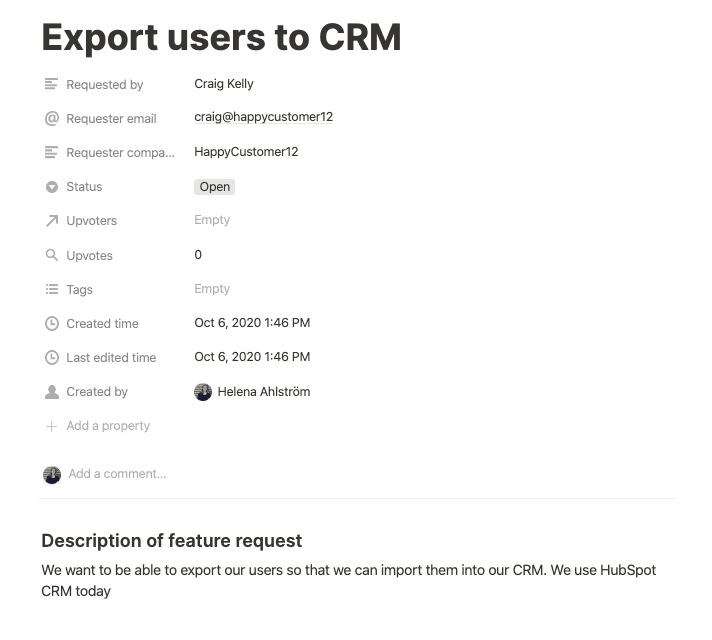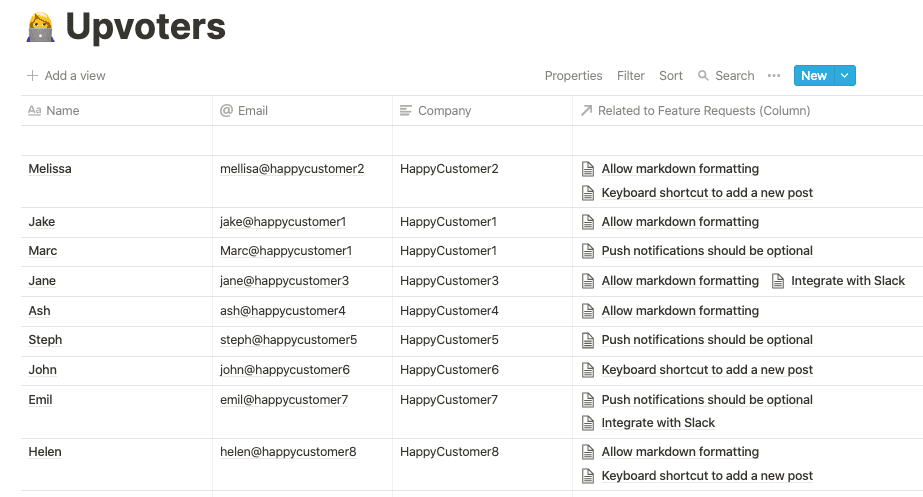Feature request tracking template - Notion

As your business grows, you will probably have an increasing number of incoming feature requests from your customers that can become complex to manage. Use this feature request tracking template for Notion to keep track of what features your customers are requesting the most, who is requesting it, and prioritize your roadmap based on data.
But first,
What are feature requests & why should I track them?
Feature requests are ideas for product improvements that your customers or team members share with you. They can either be about improving your existing features or suggestions for new features.
If you manage your product feedback and feature requests from your customers well, they are a great input to help you prioritize your roadmap and also an opportunity to build good relationships with your customers. By keeping track of your feature requests, you will always have an updated view on what matters most to your customers and which of your customers care about what.
How does feature request tracking work?
When you receive a new feature request, you add that to your list of requested features including information about who requested it. When another customer later requests the same feature, you add that as a vote for the first feature request. You now know that two of your customers have requested the same feature (and you know who the customers are).
If you do this for all of your product feedback, you will soon have an overview of the most requested features and information about who has requested it. Since you are keeping track of who has made the the request, you can make strategic choices about which features to prioritize based on the importance of the customers. You can also let those customers know when you launch a feature that they have asked for (which they will love!). Read more about how to manage your feature requests.
Feature request tracking template
We believe keeping track of your feature requests is key to building better products and customer relationships. Convas is a feature request tracking tool, so we are clearly biased 😉. But we want as many as possible to see the benefits of tracking feature requests, so we put together this feature request tracking template in Notion.
Here's how the template works
-
Open the template, duplicate it and save it to your own Notion workspace
-
When you receive a new feature request, go to the Feature Requests page and create a New request
-
Fill in the relevant information (what's the request, who requested it and what's the current status)

- When someone else requests the same feature, add them as upvoters to the feature request. You can do this either through the feature request page or go to the Upvoters page and add them from there.

- Keep track of your feature requests and number of upvotes in either the table or board view on the page
Board view
Table view
I hope you find this template useful. If you like keeping track of your feature requests, you should give Convas a try (we have a free plan to get you started). L
At Convas, we also use Notion for project management, read more about how we do that and check out our template.


